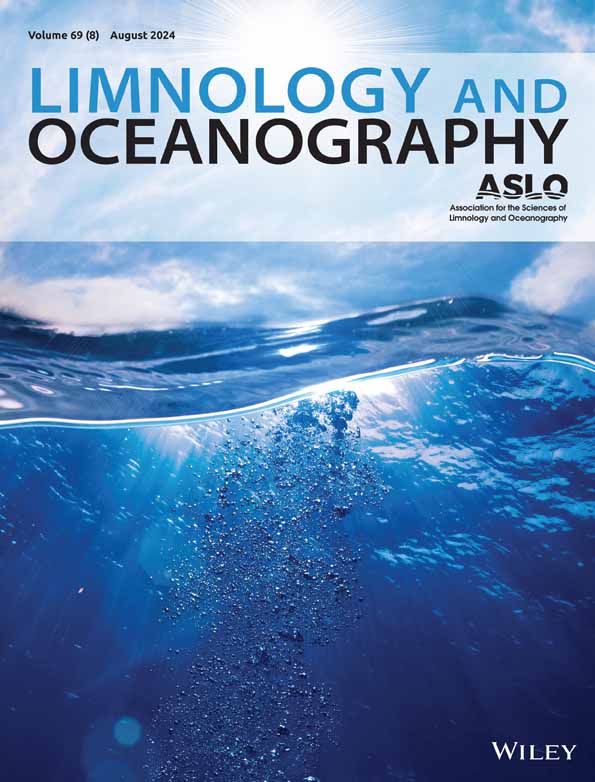基于宏基因组学的水生真菌多样性评估仍然局限于现有的数据库
IF 3.7
1区 地球科学
Q1 LIMNOLOGY
引用次数: 0
摘要
真菌在整个生态系统中发挥着至关重要的作用,但与陆地系统相比,人们对它们在水生环境中的多样性知之甚少。为了解决这一空白,我们分析了来自北方和亚北极地区26个湖泊以及一个热带水库的宏基因组,以表征真菌和真菌样(卵霉菌)群落结构。我们还研究了影响这些社区的环境因素。真菌组成的变化主要由湖泊特征、深度层数和季节来解释,其中有机碳总量是一个重要的解释变量。尽管存在地理和时间差异,但所有湖泊的优势真菌门、目和属基本一致。然而,属水平的变化表明,不同的群落组成可能受到碳基质可利用性差异的影响。将宏基因组读数分类到物种水平的尝试受到当前参考数据库有限的分类分辨率的限制,这里通过具有良好特征的卵菌属phytophthora进行了说明。虽然宏基因组学为研究整个微生物群落提供了强有力的手段,但我们的研究结果强调了一个持续存在的瓶颈:公共数据库中水生真核生物基因组的代表性不足。本文章由计算机程序翻译,如有差异,请以英文原文为准。
Aquatic fungal diversity assessment through metagenomics is still limited to current databases
Fungi play essential roles across ecosystems, yet their diversity in aquatic environments remains poorly understood compared to terrestrial systems. To address this gap, we analyzed metagenomes from 26 lakes in the boreal and subarctic zones, along with one tropical reservoir, to characterize fungal and fungal‐like (Oomycota) community structure. We also examined environmental factors shaping these communities. Most variation in fungal composition was explained by lake identity, depth layer, and season, with total organic carbon as a significant explanatory variable. Despite geographic and time differences, dominant fungal phyla, orders, and genera were largely consistent across all lakes. However, genus‐level variation indicated distinct community compositions likely influenced by differences in carbon substrate availability. Attempts to classify metagenomic reads down to the species level—illustrated here through the well‐characterized oomycete genus Phytophthora —were constrained by the limited taxonomic resolution of current reference databases. While metagenomics offers powerful means to investigate entire microbial communities, our results underscore a persistent bottleneck: the insufficient representation of aquatic eukaryotic genomes in public databases.
求助全文
通过发布文献求助,成功后即可免费获取论文全文。
去求助
来源期刊

Limnology and Oceanography
地学-海洋学
CiteScore
8.80
自引率
6.70%
发文量
254
审稿时长
3 months
期刊介绍:
Limnology and Oceanography (L&O; print ISSN 0024-3590, online ISSN 1939-5590) publishes original articles, including scholarly reviews, about all aspects of limnology and oceanography. The journal''s unifying theme is the understanding of aquatic systems. Submissions are judged on the originality of their data, interpretations, and ideas, and on the degree to which they can be generalized beyond the particular aquatic system examined. Laboratory and modeling studies must demonstrate relevance to field environments; typically this means that they are bolstered by substantial "real-world" data. Few purely theoretical or purely empirical papers are accepted for review.
 求助内容:
求助内容: 应助结果提醒方式:
应助结果提醒方式:


